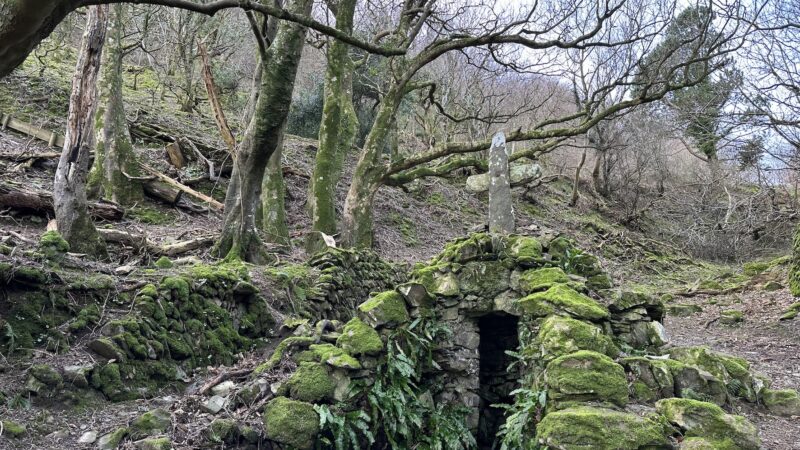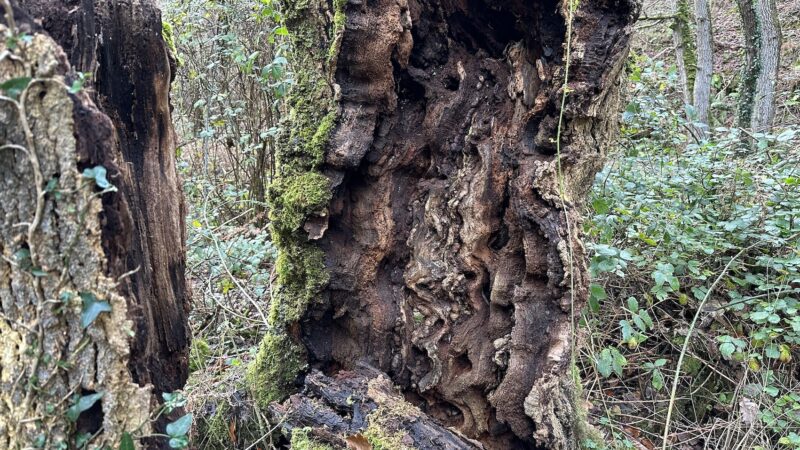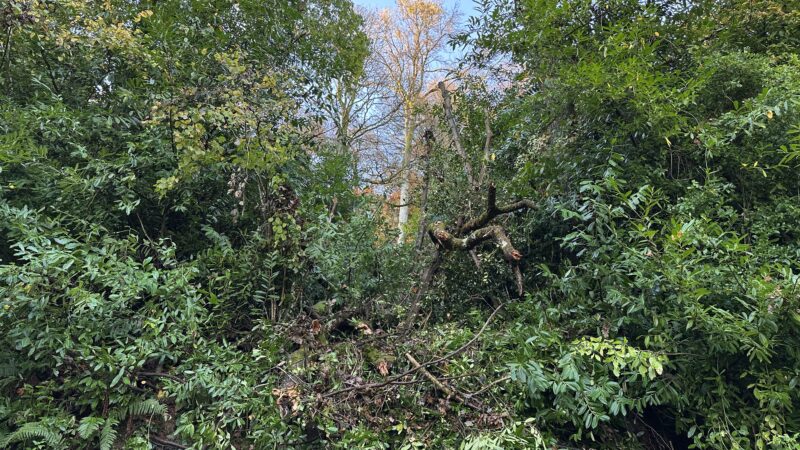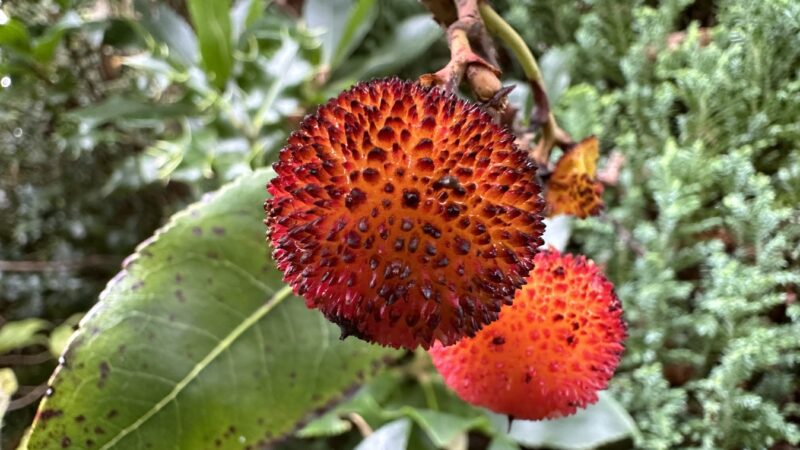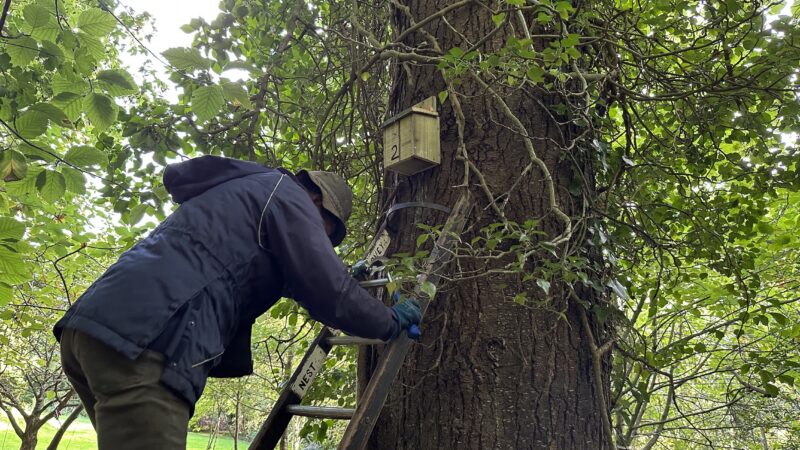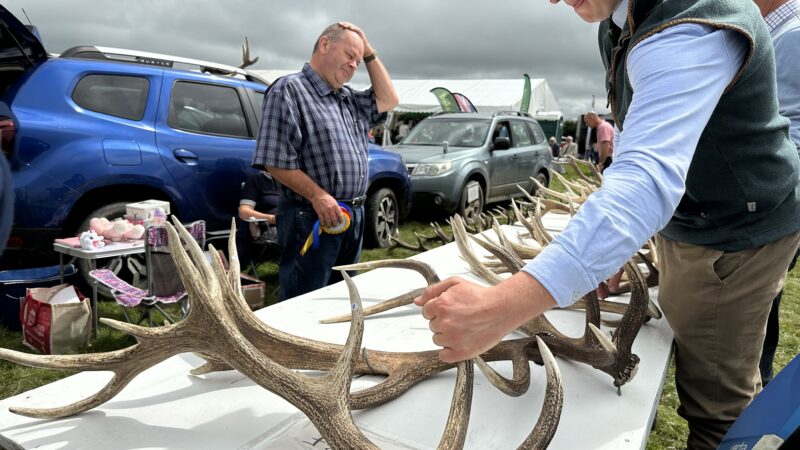At the year’s midnight
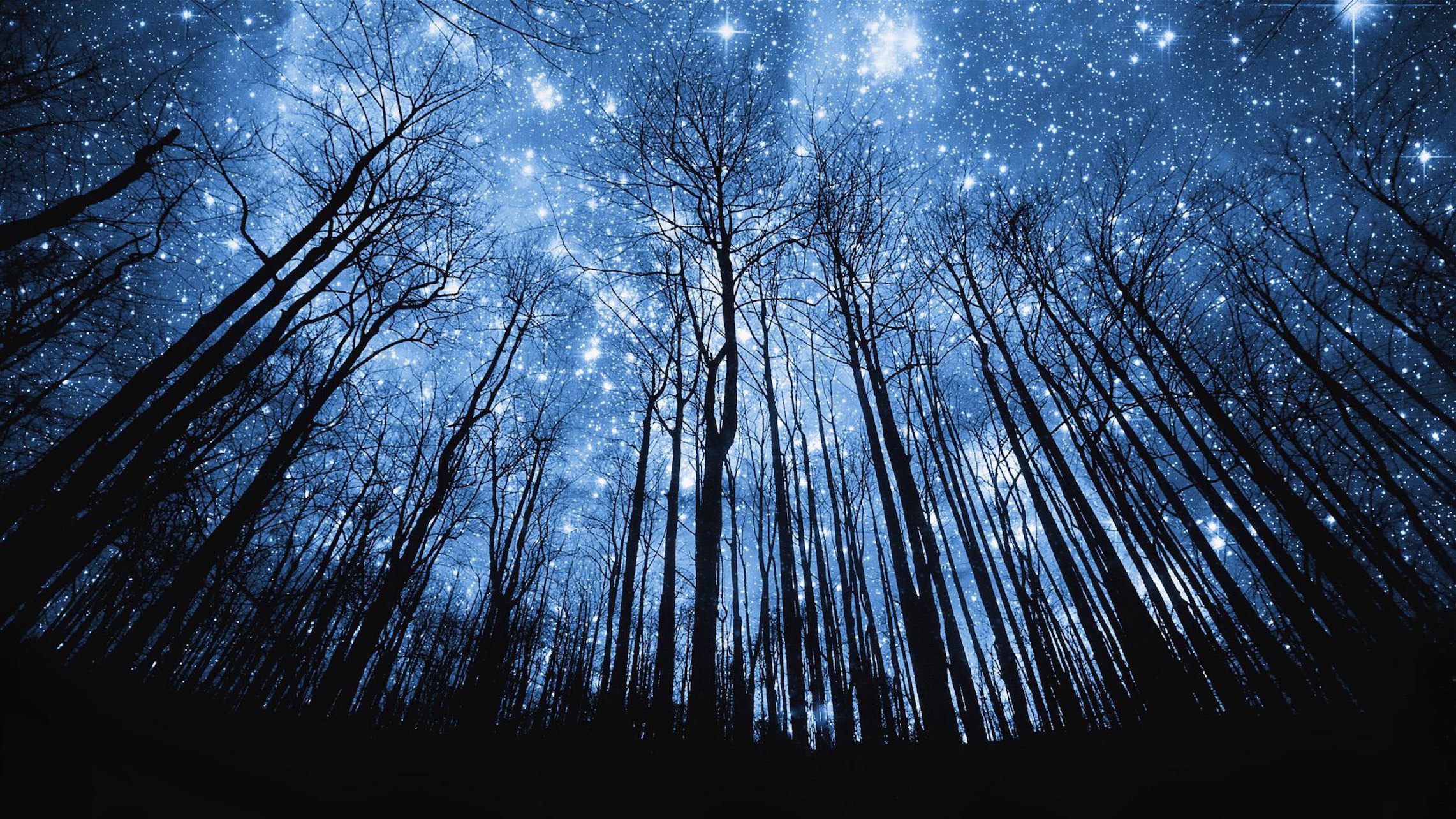
A winter night in the Marshwood Vale. Written for Dorset Life magazine December issue.
The Marshwood Vale is one of Dorset’s darker places, especially on winter nights. It’s a remote, rural area, thinly populated with no streetlights or busy roads, just green, folded fields and rumpled, browny-grey woods of oak and ash.
The night dark is densest inside the oldest farmhouses, dreaming deep under their muffles of ancient thatch. In these you need to know your way by feel, sliding wary fingers over bumpy plaster, treading carefully on uneven elm floorboards worn by generations of feet. It’s easier if you shut your eyes and let the place enfold you. Best not to look, especially at shadowy corners. Your half-awake brain might play tricks and see things that are not there.
I remember one late night in deep mid-winter, lying in bed listening while everyone else slept. Silence. Old timber-framed houses built of strong oak and heavy stone are much quieter than modern homes. There’s no ticking of radiators, no sound of metal pinging or woodwork contracting. At dusk and dawn you might hear sparrows scratching and chirping under the eaves, but at night, nothing, providing the weather is calm and there are no mice in the loft. You don’t even know if it’s raining outside. It takes a good strong gale before the timbers start creaking. Then it is as Ted Hughes wrote in his poem ‘Wind’: ‘This house has been far out at sea all night, /The woods crashing through darkness, the booming hills’.
This night was quite still. I crept downstairs. The living room smelled deliciously of wood smoke from the still-warm stove. Here there was a little light – Christmas tree ornaments glinted faintly in the soft, blue glow of the broadband router. The dog joined me in the hallway, wagging ecstatically, tail thumping the settle. I pulled on coat, hat, boots and gloves and eased open the front door.
Outdoors, the darkness disappeared as the dog bounded like a shadow over the grey, frosted grass. Sparkling stars netted the bare, black twigs of the ash tree by the gate. Walking out on to the driveway, the sky opened up and the Milky Way arced overhead. The moon was rising in the east, a sharp, silver fingernail. It was cold enough to make my teeth hurt.
It was very black under the trees in the back garden and I flicked on the torch. A tawny owl called ‘hoo-hoo’ and then ‘kwick’. Nearly a thousand years ago, this land was part of a Norman deer park. William the Conqueror gave Geoffrye de Mandeville the Barony of Marshwood. Geoffrye built a fancy castle, now a ruined hump, and created the deer parks of Marshwood and Crekelade. Around the edges of the parks were ‘hayes’, enclosures where cattle were penned during the winter to stop them eating all the fodder. Penned livestock need daily attention and the easiest way to look after them is to live on site. In time, temporary huts or shelters became permanent. It is possible that the many farm names in the Vale ending in ‘hay’, such as Sminhay, Northay and Harmshay, derive from those Norman enclosures. If so, those farms were winter-born.
I walked by the pond where the reeds stood like broken spears tipped with ice. Glossy ivy leaves caught the torch beam as I passed through the stone archway into the little paddock beyond. Four years ago we planted five cider apple trees here, partly hoping to replace the lost orchard shown on old maps. We picked a mix of sharp, sweet and bittersweet old varieties once common on the Dorset/Devon/Somerset borders. I wanted to make cider that matched Dorset writer Sylvia Townsend Warner’s description – ‘racy, poignant, oily, spicy’.
In early January the trees should be wassailed, an ancient appeal to the cider gods. You sing to the trees, light fires and, in the olden days, discharge muskets. The word ‘wassail’ derives from the Anglo Saxon ‘wes hal’ meaning ‘be whole’, or ‘good health’. I’ve always felt the blessing is intended to include people as well as trees. It recognises regeneration, the slow pulse of sap within the trees that will rise in the spring, however dead everything seems now. The words of the traditional wassail song capture this annual cycle of life and death, light and dark:
‘Old apple tree, we’ll wassail thee,
And hoping thou wilt bear.
The Lord does know where we shall be
To be merry another year.
To blow well and to bear well,
And so merry let us be;
Let every man drink up his cup
And health to the apple tree.’
As I whistled to the dog and turned back to the house, I heard the chimes of the church clock at Whitchurch Canonicorum floating clear across the Vale. Being so near the solstice, this was the darkest of the dark, the year’s midnight as well as the day’s. Yet when I looked towards the bells, I saw light. It was the storm-battered Christmas lights hung every year by the Whitchurch bellringers on top of the church tower.
St Candida and Holy Cross is a true landmark and in medieval times one of the greatest places of pilgrimage in England. Today, it’s the only parish church left with a shrine containing the relics of a saint, in this case the mysterious St Wite, revered for her healing powers. The tall, 15th-century tower was once used a navigation mark for ships in Lyme Bay. Now for a few weeks in December and January it shines out, visible for miles, lightening the darkness for all who travel through the Vale, bringing us safely home.
